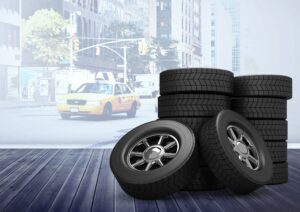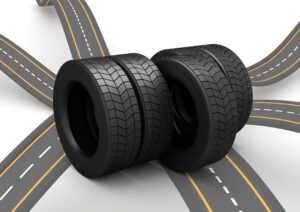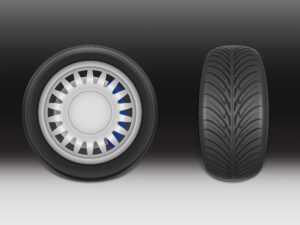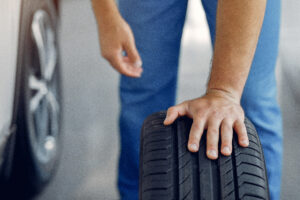Car Tyre Pressure Guide: Everything You Need to Know for Safe and Efficient Driving
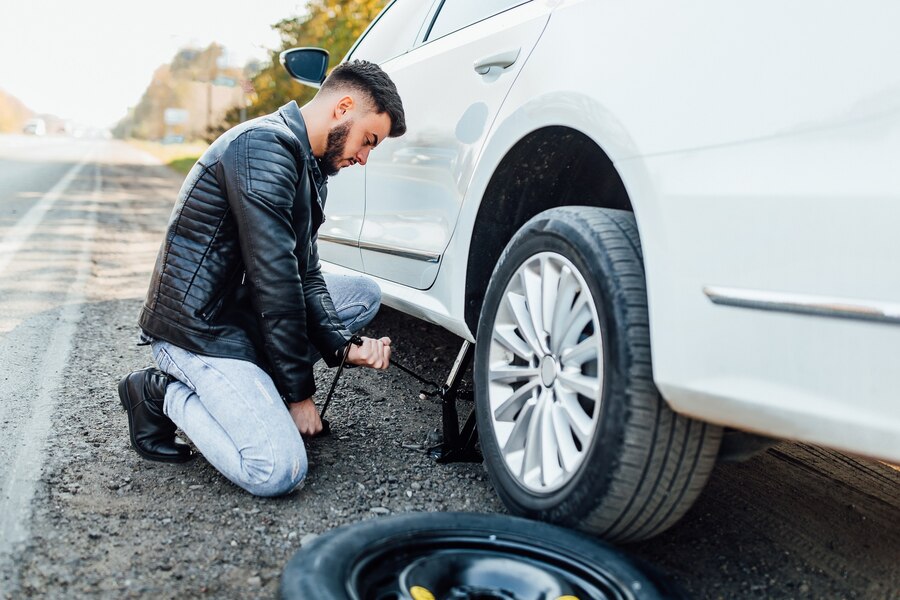
Maintaining the correct car tyre pressure is a simple but crucial aspect of car maintenance. Not only does it keep you safe on the road by improving vehicle handling and reducing blowout risks, but it also increases your car’s fuel efficiency and extends the life of your tyres. This car tyre pressure guide covers everything you need to know about optimal pressure levels, factors that affect it, how to check it, and why it matters.
Ensuring proper car tyre pressure can save you money, enhance your driving experience, and minimize your environmental impact. This article will provide you with practical insights into ideal tyre pressure for cars, including helpful tips, FAQs, and the essential role of Tyre Pressure Monitoring Systems (TPMS) in modern vehicles.
What is Car Tyre Pressure?
Car tyre pressure refers to the amount of air inside each tyre, which is measured in PSI (Pounds per Square Inch). This air pressure supports the weight of the vehicle, influences handling, and affects fuel efficiency. Each vehicle has a recommended tyre pressure range specific to its design, typically found in the owner’s manual or inside the driver’s door frame.
Tyre pressure is important for maintaining the right amount of friction between the tyre and the road. Too much or too little air can affect this balance, leading to safety and efficiency issues. Keeping your car tyre air levels within the ideal tyre pressure for cars is essential for both performance and longevity.
Did You Know? Incorrect tyre pressure, whether high or low, can compromise your car’s stability, causing poor handling, irregular tyre wear, and an increased risk of blowouts, especially at high speeds.
Ideal Tyre Pressure for Cars
Recommended Tyre Pressure Levels The ideal tyre pressure for cars is generally between 32 and 35 PSI for most passenger vehicles, but it can vary significantly based on vehicle type, tyre specifications, and load conditions. Consulting your car’s manual is crucial, as different car models may have unique requirements.
Here is a quick reference guide for recommended tyre pressure levels by vehicle type:
| Vehicle Type | Recommended PSI Range |
| Sedan | 32-34 PSI |
| SUV | 35-40 PSI |
| Pickup Truck | 35-45 PSI |
| Sports Car | 32-36 PSI |
Factors Influencing Tyre Pressure Several factors can influence your car tyre pressure and require you to make adjustments:
- Temperature: In cold weather, tyre pressure decreases, while in hot weather, it increases. For instance, during winter, tyres lose 1 PSI for every 10°F drop in temperature.
- Load: Heavier loads may need higher tyre pressures to ensure stability and prevent tyre strain.
- Driving Conditions: Long-distance or high-speed driving can cause tyres to heat up, slightly increasing pressure.
Adjusting your car tyre pressure based on weather and load helps maintain ideal car tyre air levels and can prevent uneven tyre wear and handling issues.
How to Check Your Tyre Pressure
Regularly checking your car tyre pressure is key to safe and efficient driving. Here’s a step-by-step guide to help you keep your tyres in top shape:
- Park on a Flat Surface: Make sure your car is on level ground to get an accurate pressure reading. Tyres should be cool, ideally after a few hours of rest.
- Locate the Tyre Valve: Remove the valve cap from each tyre to access the air valve.
- Use a Tyre Pressure Gauge: Attach the gauge to the valve stem, and read the pressure measurement.
- Underinflated: Add air until you reach the recommended level.
- Overinflated: Release air by pressing the valve gently until the pressure drops to the desired level.
- Check the Spare Tyre: Don’t forget to check your spare tyre, as it’s often overlooked but crucial for emergencies.
Tools Needed for Checking Tyre Pressure
- Tyre Pressure Gauge: Available as a simple pen-style gauge or digital model, a gauge is essential for monitoring your car tyre pressure.
- Air Inflator: A portable air inflator, found at most gas stations or for home use, can help you add air on the spot.
Pro Tip: Checking your car tyre pressure once a month or before long trips can help ensure a smooth and safe ride, while also optimizing your fuel economy.
Why Maintaining the Right Tyre Pressure is Essential
Ensuring correct car tyre pressure offers numerous benefits, making it a crucial part of car maintenance.
Benefits of Proper Tyre Pressure
- Safety: Maintaining the right tyre pressure reduces the risk of blowouts, enhancing control over the vehicle and ensuring safer handling.
- Fuel Efficiency: Correct tyre pressure lowers rolling resistance, leading to improved fuel efficiency, and saving you money at the pump.
- Tyre Longevity: Properly inflated tyres wear evenly, which extends their lifespan and saves on replacement costs.
- Environmental Impact: Improved fuel efficiency reduces emissions, contributing to a lower carbon footprint.
Risks of Incorrect Tyre Pressure
- Underinflated Tyres: These create excessive friction and cause rapid tyre wear, increasing the likelihood of overheating and blowouts. Underinflation also reduces fuel efficiency.
- Overinflated Tyres: When overinflated, tyres can have less traction, leading to a harsher ride and greater susceptibility to damage from road hazards.
Car Tyre Pressure Monitoring Systems (TPMS)
Many modern vehicles come equipped with a Tyre Pressure Monitoring System (TPMS), which alerts the driver when tyre pressure drops below a safe level.
Understanding TPMS and How It Works There are two types of TPMS systems: Direct and Indirect.
- Direct TPMS: Uses sensors inside each tyre to monitor pressure levels directly.
- Indirect TPMS: Relies on the anti-lock braking system (ABS) to detect when a tyre is low on pressure by measuring differences in wheel rotation.
Advantages of TPMS
- Safety Alerts: TPMS provides immediate alerts if tyre pressure falls below recommended levels, making it especially useful for high-speed or long-distance driving.
- Maintenance Support: TPMS systems are a valuable aid, but it’s still wise to manually check your car tyre pressure regularly for accurate readings and adjustments.
Conclusion
Proper car tyre pressure is crucial for maintaining vehicle safety, maximizing fuel efficiency, and extending the life of your tyres. Regularly checking and adjusting your car tyre air levels not only helps prevent unexpected issues on the road but also contributes to a more economical and eco-friendly driving experience. By following this car tyre pressure guide, you can enjoy safer, smoother, and more efficient journeys.
Call to Action
“Ensure Your Car is Road-Ready with KwikFix Auto”
Looking for reliable tyre maintenance services? KwikFix Auto offers convenient tyre care, air pressure checks, and roadside assistance with doorstep service and transparent pricing. Keep your car running efficiently and safely by ensuring correct car tyre pressure with KwikFix Auto.
Contact KwikFix Auto today or download the app for all your car service needs, anytime, anywhere in Mumbai.
Frequently Asked Questions
Q1. How often should I check my tyre pressure?
A1. Check your car tyre pressure monthly and always before embarking on a long road trip.
Q2. What happens if I drive with low tyre pressure?
A2. Driving with low pressure can cause poor handling, uneven tyre wear, and even blowouts. It also reduces fuel efficiency and increases wear on the tyre’s sidewalls.
Q3. Should I fill my tyres with nitrogen or air?
A3. Nitrogen remains more stable with temperature changes than regular air, but for most drivers, air is sufficient.
Q4. What are the signs of incorrect tyre pressure?
A4. Signs of low pressure include a soft ride, bulging tyres, and lower fuel efficiency. High pressure may result in a rough ride and reduced traction.
Q5. Can I rely solely on TPMS to monitor tyre pressure?
A5. While TPMS is a helpful feature, it’s a good idea to manually check your tyre pressure monthly for the best accuracy.
Q6. Does tyre pressure change with weather?
A6. Yes, temperature changes affect pressure. In cold weather, tyre pressure tends to drop, so seasonal adjustments are recommended.
Q7. Is there a difference in tyre pressure between front and rear tyres?
A7. Some vehicles require different pressures for front and rear tyres. Consult your manual for specific guidance.
Q8. Can overinflated tyres be dangerous?
A8. Yes, overinflated tyres can have reduced grip on the road, leading to potential handling issues, especially in wet conditions.
Related Articles
Car AC Gas Filling Cost | Electric Car Battery Capacity | How Car AC Works | How to Clean Car AC Filter | Car AC Repair Cost | AC Chair Car vs Executive Chair Car | Which Gas is Used in Car AC | Does AC in Car Consume Fuel | Why My Car AC is Not Cooling | Xylo Car Mileage with AC

